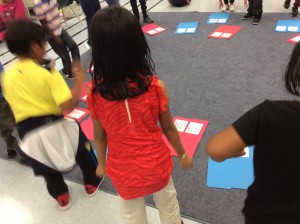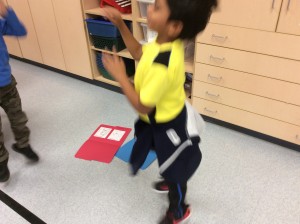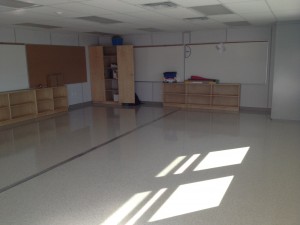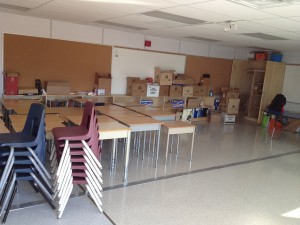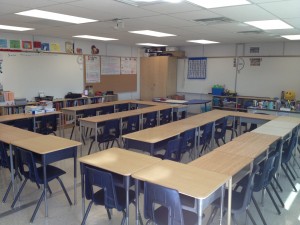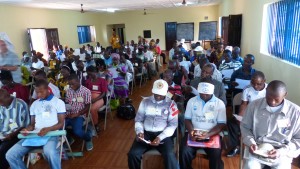
Have you ever walked into a classroom and did a double take? Trying to gather your bearings, did it feel as if you’d been in that exact same spot and the very same moment before? I know it’s happened to me and wonder if other educators feel this way?
Returning to the classroom in September can be like this. The faces are different, maybe even the school, but there are connective currents running through time and space that signal you’ve been there before. I am reminded of a hall of fame quote by Yogi Berra, “It’s déjà vu all over again.”
This September, I started at my 4th school in 9 years. I could not be more thrilled joining a new family of learners and educators. Of course, I miss my old schools, but as I’ve written before, we have to move on to grow in our professional practice. This year was no exception, even after 3 amazing years at my former school.
Unsurprisingly, since the first bell on Day 1, things have been occurring at the speed of learning. Meeting my students/families, observing them interact, and watching them navigate our classroom for the first time. I’m never sure who is more anxious on the first day, parents, students or me?
To this teacher, the first week of school is like a three-way collision between energy, ideas, and awkwardness. I love walking into a new building and asking students to help me learn directions and routines. On more than one occasion, a student will ask, “Aren’t you supposed to know this?” I reply, “Maybe, but it’s more fun to ask. I’m new.”
What I’ve seen over my first 9 Septembers
After 9 first days of school, some things have not changed. September is a time when everyone is (re)acquiring their routines and rhythms. Everyone is trying to put their best foot forward – almost. Depending on their Summer, the most reticent learners and educators might still require an extra week or 2 to get up to speed. We need to avoid the rush to establish out of reach expectations. There have been a couple of years where I struggled to find my groove. I have found that the first few weeks are like a contract negotiation. Everyone is trying to get what they want out of the deal, and it takes time to hammer them out.
Each year I enter our, not my, classroom with complete trust that students are there to be awesome. Empowering them and presuming best intentions have always been great places to launch an important year together. Bringing students into the conversation and decision-making process, from the start, allows for long-term success based on understanding and mutual respect.
This happens in our classroom in a number of ways across a number of days. Students are asked to take chances, make mistakes, and be unafraid to fail. It asks us all to become comfortable with discomfort, feeling safe when vulnerable, and knowing everyone is respected and valued. If a space for this has not been created in my classroom, then there will be a risk of starting off on the wrong foot. Taking the time to create a consistent and caring class culture will ensure a cohesive committed community for the whole year.
What I did over the Summer
As a kid, it seemed that every start of the year writing assignment was a retelling of my summer. This was usually followed up with a presentation in front of the class. I am not sure whether this was an act of sadism or masochism for the teachers who assigned the task, and then had to listen as each one was shared. All I remember is that the act of recalling my summers and the subsequent in-class attention were boring for me too.
As I enter the classroom, I vowed to change this. I have asked students to share what they’ve regretted about their Summer, or what they would do over and change. We hold off on “presentating” in favour of peer sharing where volunteers are asked to read a few highlights that stand out after reading their classmates’ work. I’ve found that using 6 Words Stories as a great introduction exercise.
This year I had students write their own and then write one for their seat partner. *
Build flexibility into your planning
Beware of over planning. Yes, some planning must be done. Preparation is important, but a measured approach is best. Over planning has been, and continues to be a mistake I make. However, when plans go uncompleted or go off course, I am not going to count it as a loss. There needs to be time built into our work for the second and third questions. Sometimes students have more questions than we have answers. Yes, it takes away time from your plans, but the relationship building established through it will become invaluable going forward. Give yourself permission to go off script. The students will appreciate the spontaneity.
Noise
As part of classroom routines and noise management, I have heard classics from, “Hands on top. That means stop.” to “Un, deux, trois, les yeux sur moi.” These work well with JK/SK and primary classes, but tend to aggravate the more sophisticated learners in the Junior Panel.
I use a number of noise makers, ranging from a wood block shaped like a pig, a rain stick, and a guira Each is strategically placed about the room to access as needed. They are used to draw students back from their independent or team work. I also have a spot in the class where I will wait for students to come back to hear further instruction or feedback.
Another ‘attention-getter’ to consider is something shared by Paul Solarz called “Give me 5!” I love the power this places in students hands along with the responsibility to be relevant and engaging as they capture the room to share their ideas.
Having a wide variety of tools in the kit have allowed each of my 9 first days of school to begin memorably and effectively. Of course there are bumps and tweaks to be made along the way, but that ads to the joy of the job. As each year brings us a unique set of lives to discover, equip, and watch flourish.
Thank you for reading this post. I look forward to sharing with you again this year. If you have any questions about the resources or strategies shared please message me below.
*Which 6 words would you use to share your story? Feel free to share in the comments section.





